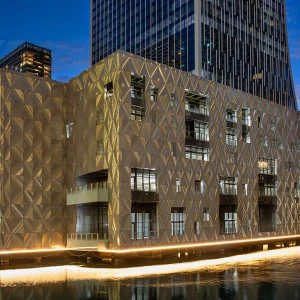Winning the award the Tokyo-based architect whose projects include The Centre Pompidou-Metz in France and Tamedia Building, Zurich, Switzerland, enters an illustrious pantheon of Prizker Laureates, including Zaha Hadid, Rem Koolhaas and Peter Zumthor.

Shigeru Ban. Photo by Shigeru Ban Architects
As well as designing rojects for private clients, Shigeru Ban is also well known for his humanitarian projects, which include a cardboard cathedral in Christchurch, New Zealand, which was built after the earth quake that hit the country in 2013.

Cardboard Cathedral, 2013, Christchurch, New Zealand Photo by Stephen Goodenough
For twenty years Ban has travelled to sites of natural and man-made disasters around the world, to work with local citizens, volunteers and students, to design and construct simple, dignified, low-cost, recyclable shelters and community buildings for the disaster victims.

Japan Pavilion, Expo 2000 Hannover, 2000, Germany. Photo by Hiroyuki Hirai
Responding to the Award, Ban said: ‘Receiving this prize is a great honour, and with it, I must be careful. I must continue to listen to the people I work for, in my private residential commissions and in my disaster relief work. I see this prize as encouragement for me to keep doing what I am doing — not to change what I am doing, but to grow.’

Centre Pompidou-Metz, 2010, France. Photo by Didier Boy de la Tour
The Pritzker Architecture Prize is given each year to honour a living architect or architecture practice whose built work demonstrates ‘a combination of those qualities of talent, vision, and commitment, which has produced consistent and significant contributions to humanity and the built environment through the art of architecture’.

Nicolas G. Hayek Center, 2007, Tokyo, Japan Photo by Hiroyuki Hirai

Paper Temporary Studio, 2004, Paris, France. Photo by Didier Boy dela Tour





